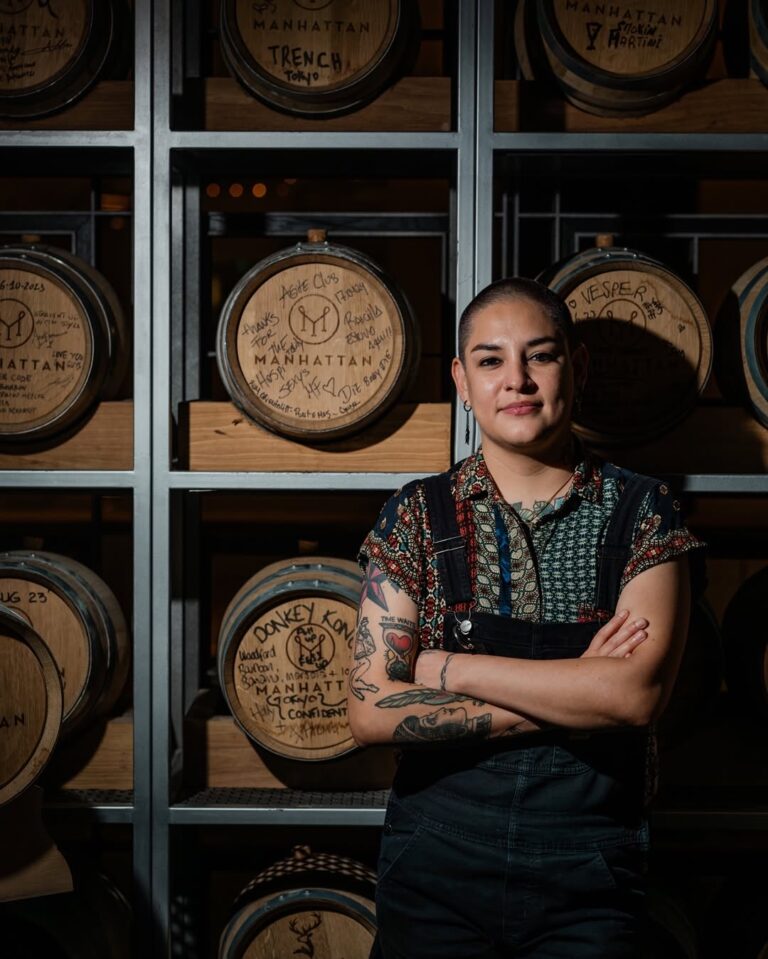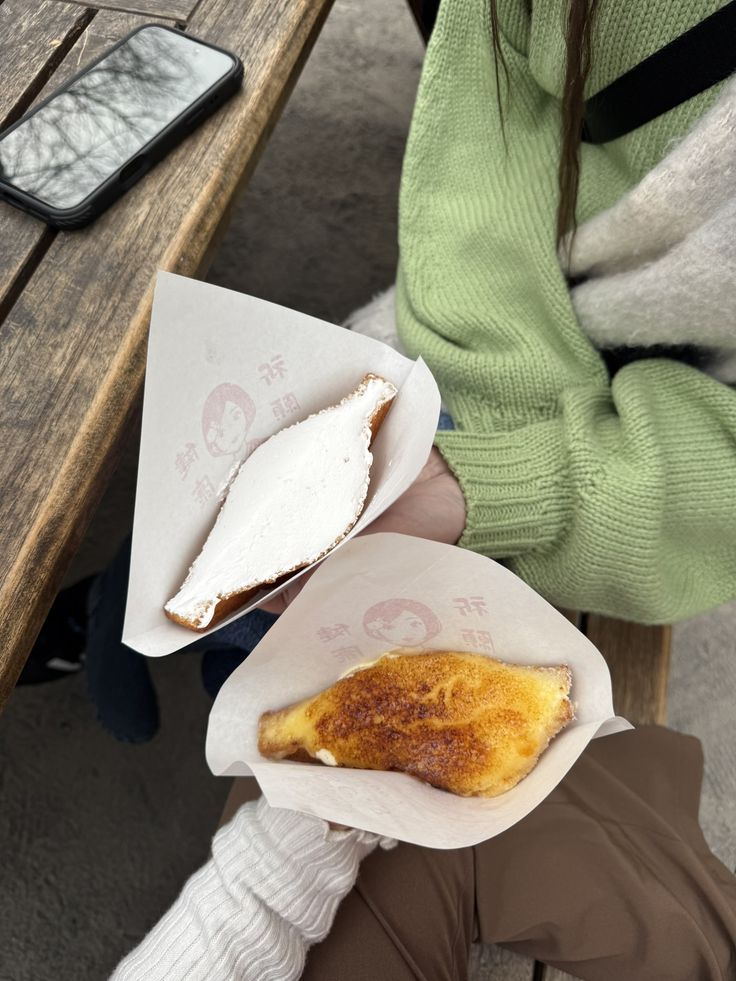Go behind the scenes at The Growhouse
The third branch of the beloved Dubai casual dining spot One Life Kitchen has opened another branch, which has quickly become a popular restaurant in the artistic district of Alserkal Avenue.
The Growhouse by One Life brings in a unique blend of nature, colour, and an open-air space that creates a serene atmosphere. On the surface, it’s incredibly inviting, with its grey cobblestone courtyard tiles, an ambiance thar feels like a slice of summer and plants around the room.
The functional aspects of the in-house farm are fascinating, often looked over in favour for the aesthetics of the space, but behind the scenes runs a carefully operated and well-constructed plan – a technical and eco-conscious machinery that lives and breathes community.
Committing to the Farm-to-Table Experience
The restaurant was first conceptualised with the One Life Kitchen philosophy of using the most natural ingredients as part of their menu. One Life has always valued scratch cooking as part of the process, with the emphasis on organic food taking centre stage.
“You know, that really has been a part of our DNA from a food perspective for, I’d say, like eight or nine years since we’ve been open, and we were always looking for ways to kind of be more like, closer to producing our own kind of ingredients,” says founder Necip Camcigil.
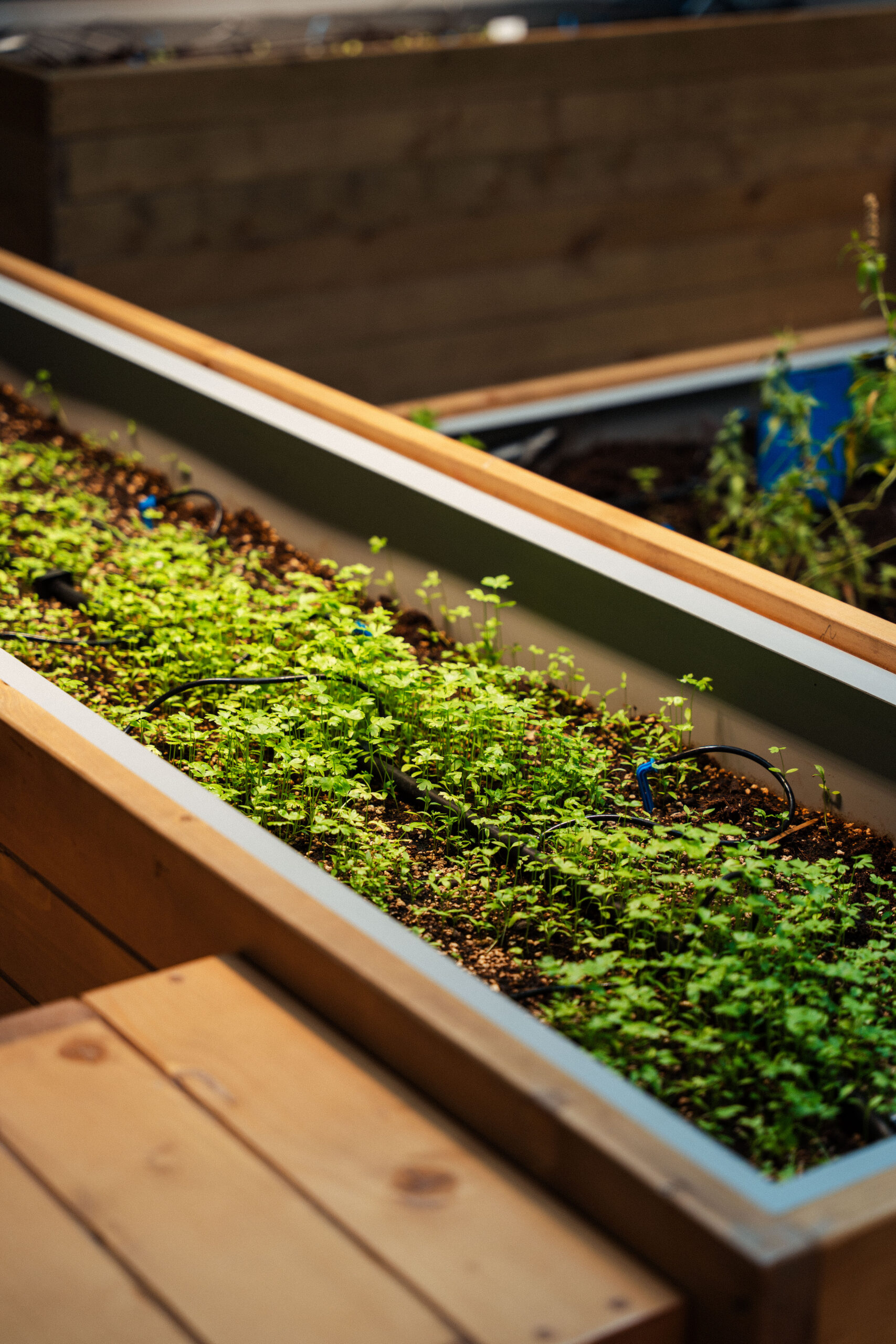
“The Growhouse was, I would say, just kind of like something we were interested in for growing vegetables. It’s something that’s quite easy but at the same time quite difficult. It’s almost like learning a language, and you know, once you know how to speak that language, it’s easy.”
The idea was driven from aligning with the brand’s concept while adding an innovative flair to the space. Upon being approached by Alserkal, Necip Camcigil and his partner in the venture, Chef Kelvin Kelly’s idea came to life, where they partnered with UAE-based sustainable solutions provider LetitGRO to produce vegetables in the farmhouse which contribute to the menu. Local company, The Waste Lab, will help them convert food waste into a resource.
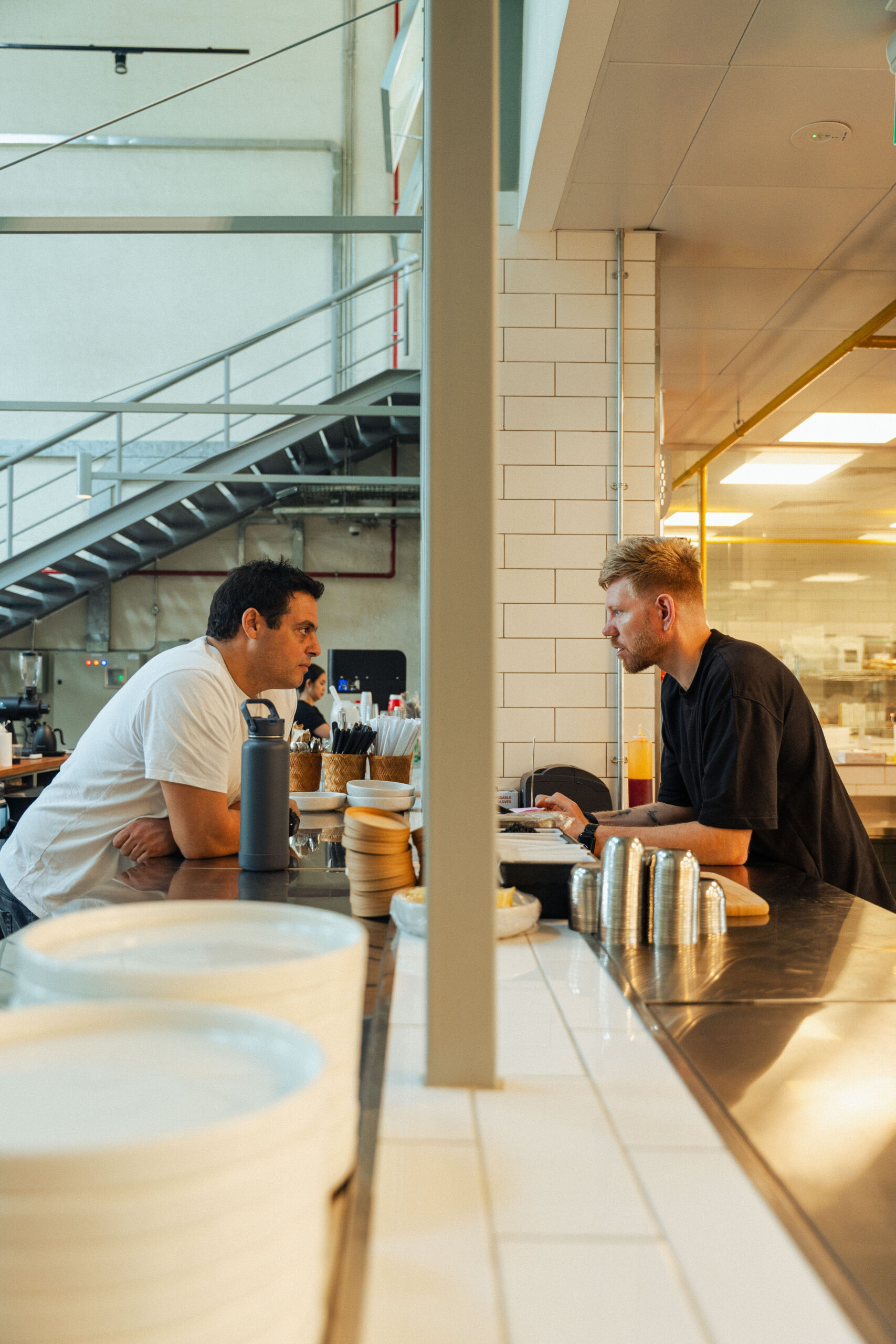
Education is Vital
One Life’s farming system was developed with an educational aspect in mind. The farming method was soil-based, to allow for easier learning in the future. A hydroponic farming system, which produces a higher yield, was considered, but the pair opted for a soil-based medium to make the learning process of farming more accessible.
It goes beyond the bounds of a traditional casual dining eatery; The Growhouse doubles as a space for knowledge to be passed on to people, with soil-based farming being simpler for people to learn.
Global Flavours with Local Warmth
The menus are curated with culinary freedom, allowing for a confluence of dishes and flavours from around the world. The Growhouse isn’t limited to a specific cuisine and is designed with the idea of everyday food that does not get mundane and redundant. Most of the dishes are similar to the other branches, with some unique concepts specifically for the Growhouse locations.
“It could either be an ingredient, and I don’t necessarily mean an ingredient for the farm, just an ingredient on the market that the chef receives or tries, or a supplier tells him, ‘Try this ingredient,’ and then he gets inspired from that to create a dish. It could be something we saw somewhere or we thought about. I mean, oftentimes the chef will maybe just have, like, a moment of, I want to try this,” remarks Camcigil.
Bringing The Outside, Inside
“To bring in that farm feel, we wanted it to be an outdoor courtyard. It’s distinct from the other two locations but follows the same design language,” says Camcigil.
From the high open-end ceilings to vibrant, lush plants growing around the room, the space evokes an outdoor ambience while still maintaining a casual colour that the other two restaurants carry.
The restaurant was designed in collaboration with an architect, with the farming space being allocated upstairs in accordance with the produce’s needs for water, nutrients and light. When walking up a trail of silver stairs, there’s a cosy, inviting indoor farm with wooden benches between where dill and other plants are grown.
“The vibe that we’re going for here really is like that you’re outdoors, even though you’re indoors, to and especially once the winter hits and the weather gets better, we’re going to open all these windows, and I think at that point, like, you’ll really capture that feeling, because what we’ve seen in our other two locations is when the weather is good, the outdoor seating is the first to get occupied,” he adds.
Self-Sustaining Systems are Key
The Growhouse’s farm was intentionally crafted to create a convenient farming system that integrates automation and technology to grow produce. Inside the upstairs farm is a temperature-controlled room, with each planter having their own individual tiny irrigation system. To keep the plants growing, there is a tank and a pump, alongside a network of tubes which supply the crops.
“Having the Growhouse actually upstairs on the farm, it’s pretty novel. We thought it was novel as well, but maybe we didn’t expect that people would respond to it in such a positive way, but they have been,” says Camcigil.
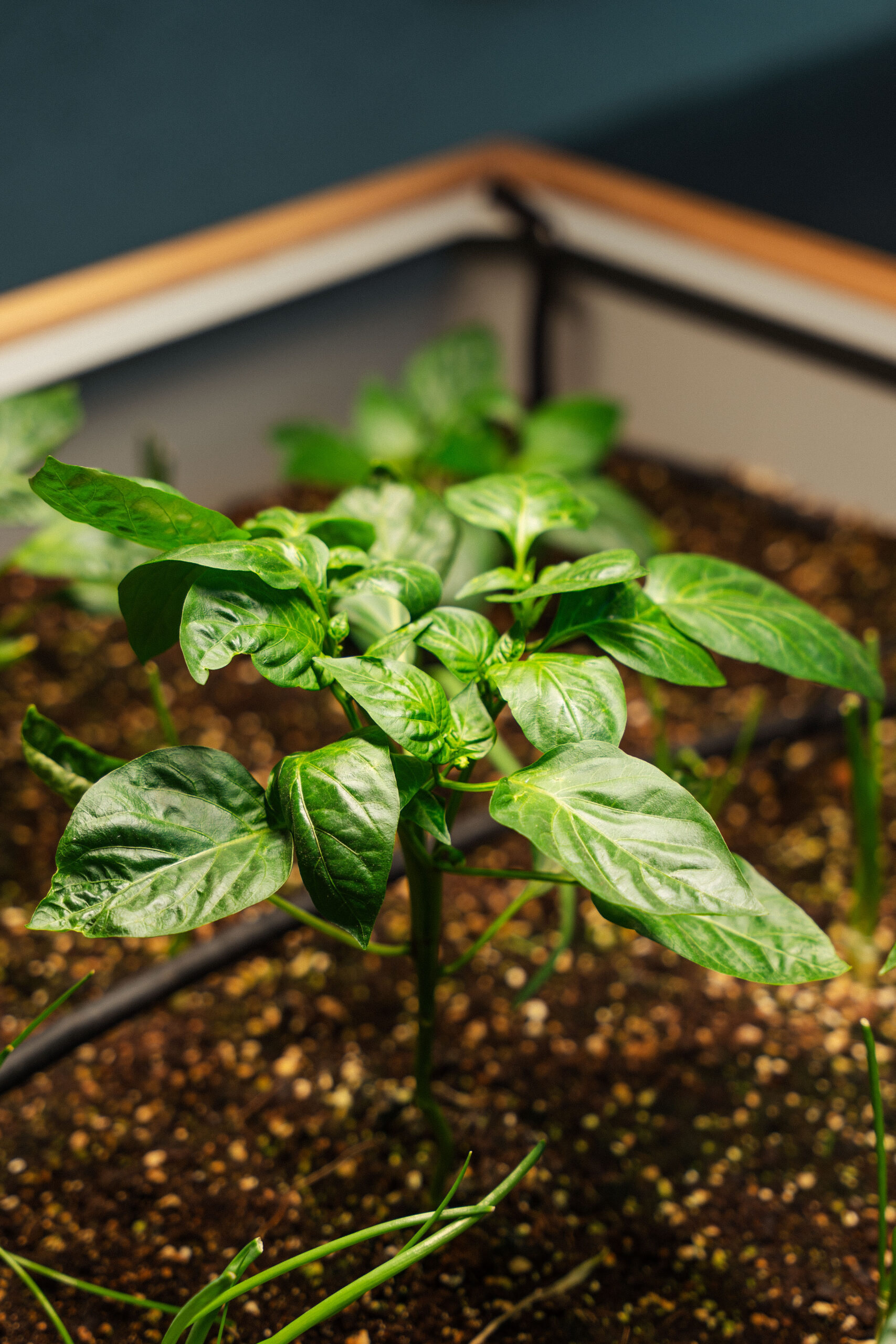
There are also grow lights that are used in addition to natural sunlight. Windows line the cosy indoor farm, where natural sunlight can seep through as well. The team operates and supports the farm, giving the plants essential supplies such as nutrients, and is in charge of the growth and health of the indoor farm. The farming system is primarily naturally based, using soil, an automated nutrient tank and the grow lights as the only artificial elements to the structure.
Image credit: Supplied


